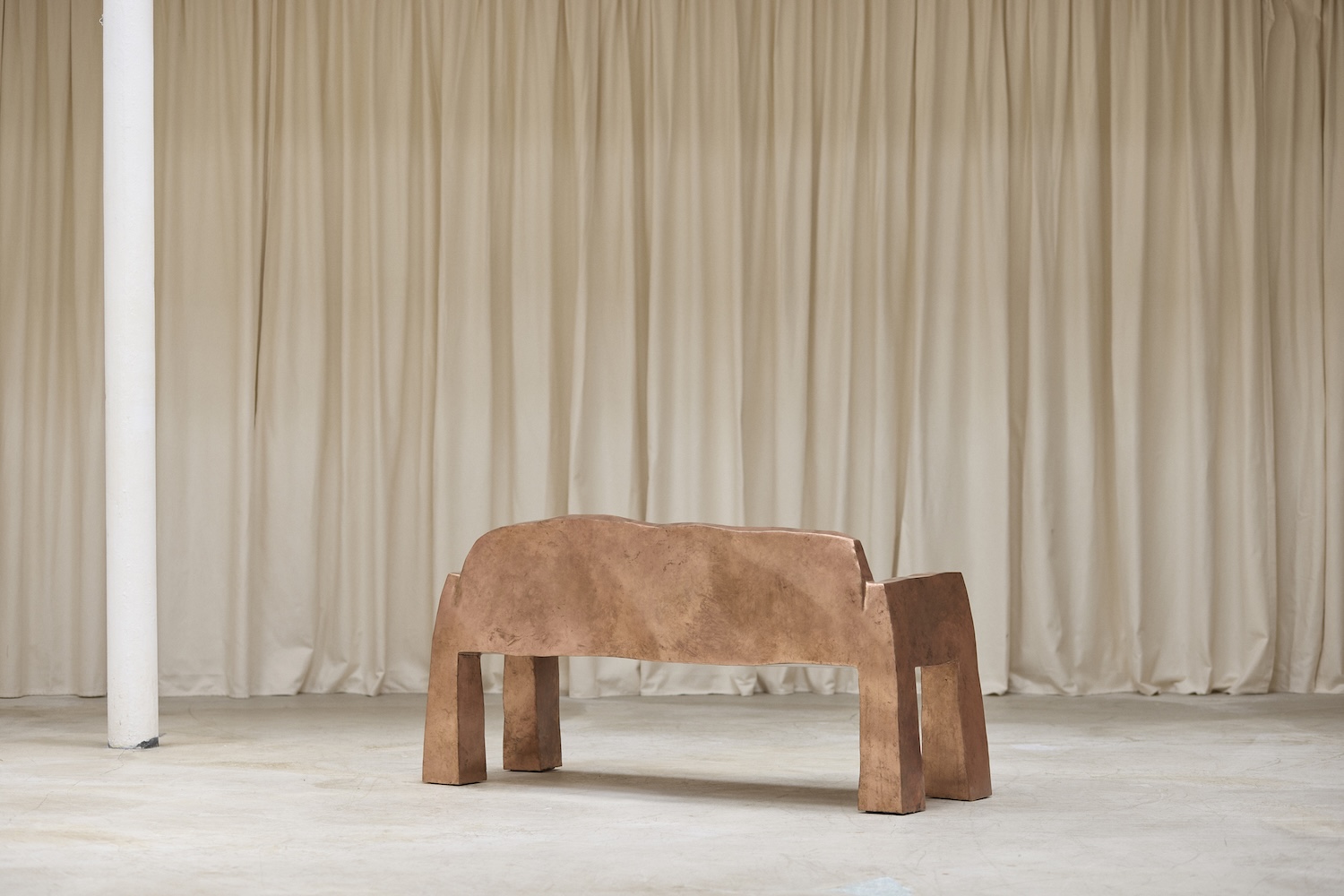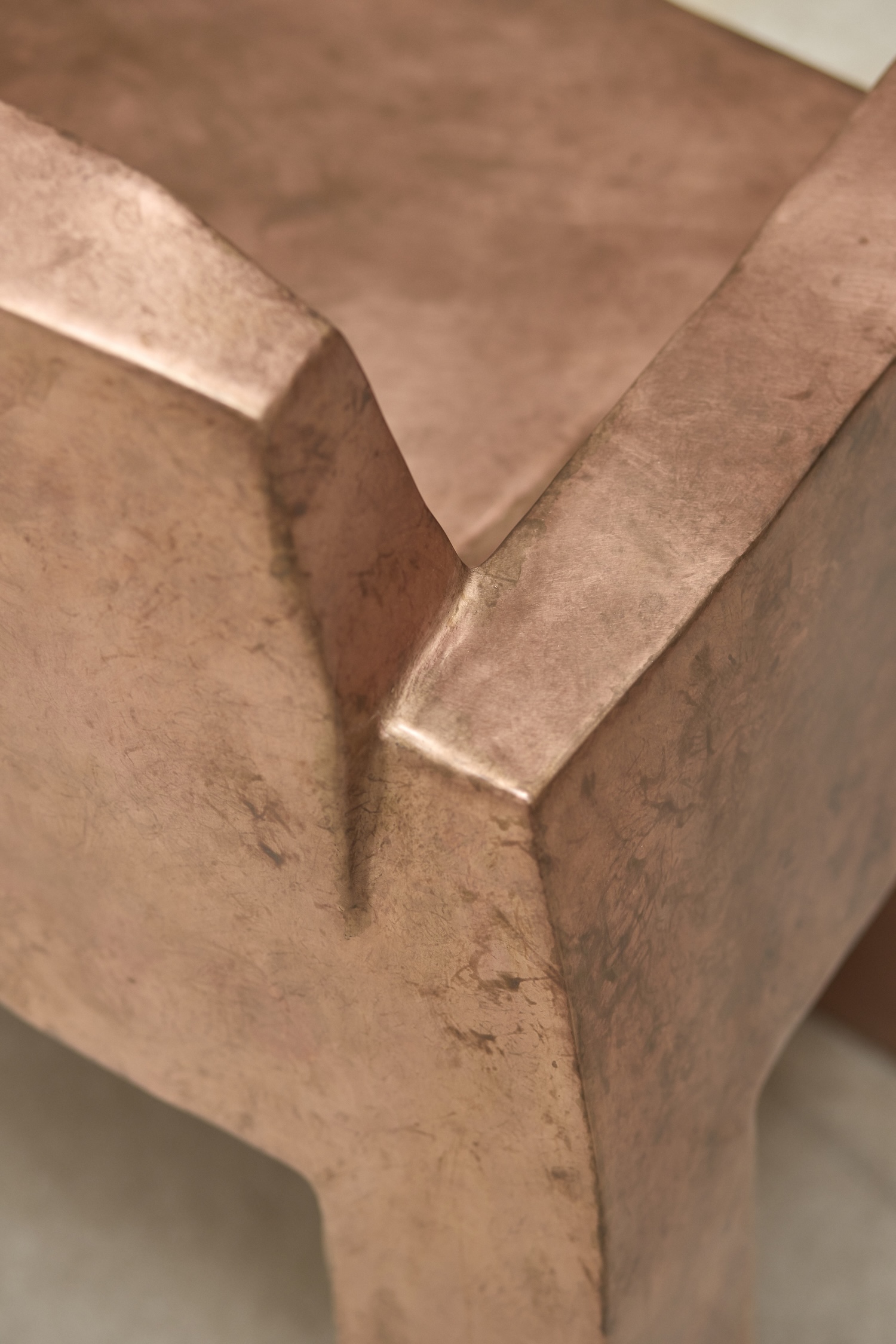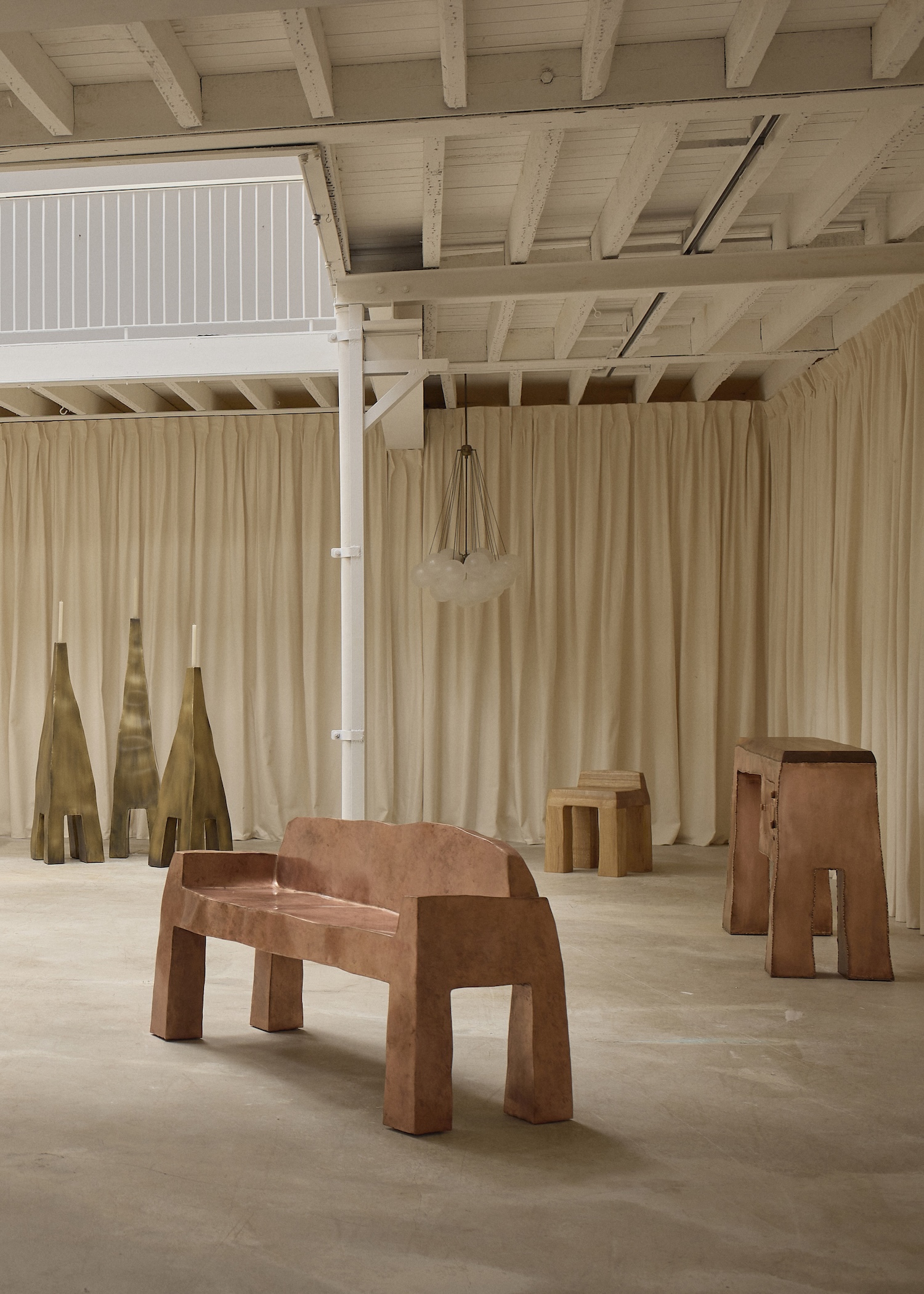Bench is part of a larger collection presented by St Vincents for Nick Valentijn’s Solo Show, opening in Antwerp, Belgium. Nick Valentijn’s latest work emerges from his rural Dutch workshop not as furniture in any conventional sense, but as a meditation on metal’s capacity for both strength and surrender. Here, in the marriage of copper’s ancient malleability with contemporary sculptural vision, lies a piece that challenges our most basic assumptions about seating, support, and the very nature of domestic objects.
The backrest appears to rise from the bench’s surface like a thought becoming form – not welded, not attached, but seemingly drawn upward in a single fluid gesture that defies the material’s inherent stubbornness. This technical achievement speaks to copper’s unique properties among metals: its willingness to flow under skilled hands, its ability to hold complex curves without breaking, and its generous acceptance of the patination process that gives each piece its distinctive voice. Where steel might crack under such manipulation, copper yields and remembers, creating forms that feel both inevitable and miraculous.
Valentijn’s approach here echoes the great metalworkers of the Arts and Crafts movement – Gustav Stickley’s honest construction, Charles Rennie Mackintosh’s sculptural furniture – yet carries a distinctly contemporary sensibility that positions function as starting point rather than destination. “I like to see how far I can strip function away before an object becomes something else entirely,” he explains, and this bench embodies that philosophy perfectly. It offers seating, yes, but more importantly, it offers presence – a quality that transcends utility to enter the realm of sculpture.
The visible marks of making become part of the work’s poetry rather than evidence of imperfection. Each hammer blow, each careful polish, each decision to leave or refine a surface, accumulates into a narrative of creation that speaks directly to our hunger for authentic process in an age of digital fabrication. The copper’s light patination suggests time’s gentle passage, hinting at the material’s future evolution as oxidation slowly transforms its surface color and texture.






